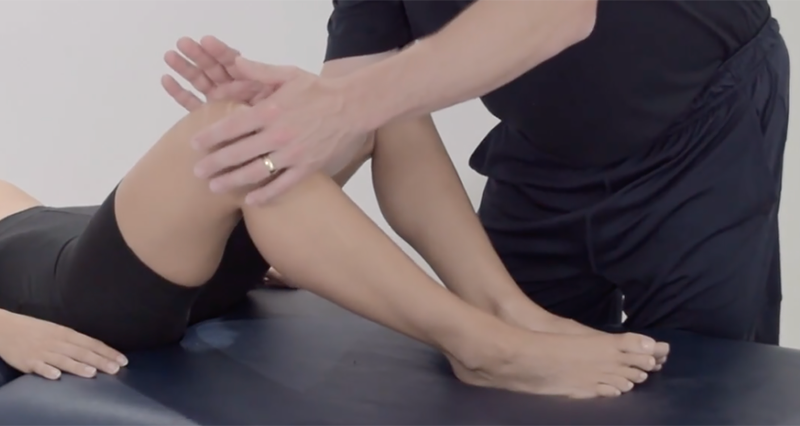What is the Thomas Test?
The Thomas Test assesses the flexibility and function of the hip flexors and quadriceps muscles. The hip flexor muscles flex the hip, or lift the knee forwards and upwards. They include the iliopsoas muscle group, rectus femoris, and occasionally the sartorius muscle.
This is important in sports medicine as it affects overall posture, thereby influencing susceptibility to certain injuries.
How to perform the Thomas test
- Patient Positioning: Have the patient lie on their back on an examination table, with their legs hanging off the edge at the knee.
- Test Execution: The patient pulls one knee towards their chest, holding it with their hands to keep the lower back flat against the table. This position flattens the lumbar spine and removes the normal lordotic curve, crucial for isolating the hip flexors.
- Observation: Observe the position of the opposite leg (the one not being held). A person with normal hip flexor flexibility will have the thigh remain in contact with the table, and the knee will hang down towards the floor without significant resistance. Ideally, the angle between the thigh and the table should be 90 degrees or more, showing no hip flexor tightness.
- Assessment: If the opposite thigh lifts off the table or the knee extends due to tightness, it indicates tight hip flexors. Typically, the iliopsoas and/or rectus femoris). The degree of lift off the table indicates the tightness’s severity.
- Bilateral Examination: Perform the test on both legs to compare hip flexor flexibility on each side.”
Interpreting the Thomas Test
The Thomas Test is a simple, non-invasive way to evaluate hip flexor tightness. However, interpreting the Thomas Test should be part of a broader physical examination.
Additionally, it’s crucial to consider other factors. For instance, overall posture, muscle strength, and the presence of any hip or spinal pathology. These are essential elements to evaluate alongside the test results.
Identifying Hip Injuries with the Thomas Test
In sports medicine, practitioners rely on the Thomas Test to evaluate hip flexibility and function, focusing on identifying specific injuries:
- Hip Flexor Strain
- Quadriceps Strain
- Lower Back Pain
- Posture-related Musculoskeletal Issues
This targeted approach allows for the creation of customised treatment and rehabilitation strategies. Therefore, helping athletes recover efficiently and return to their activities with confidence.



